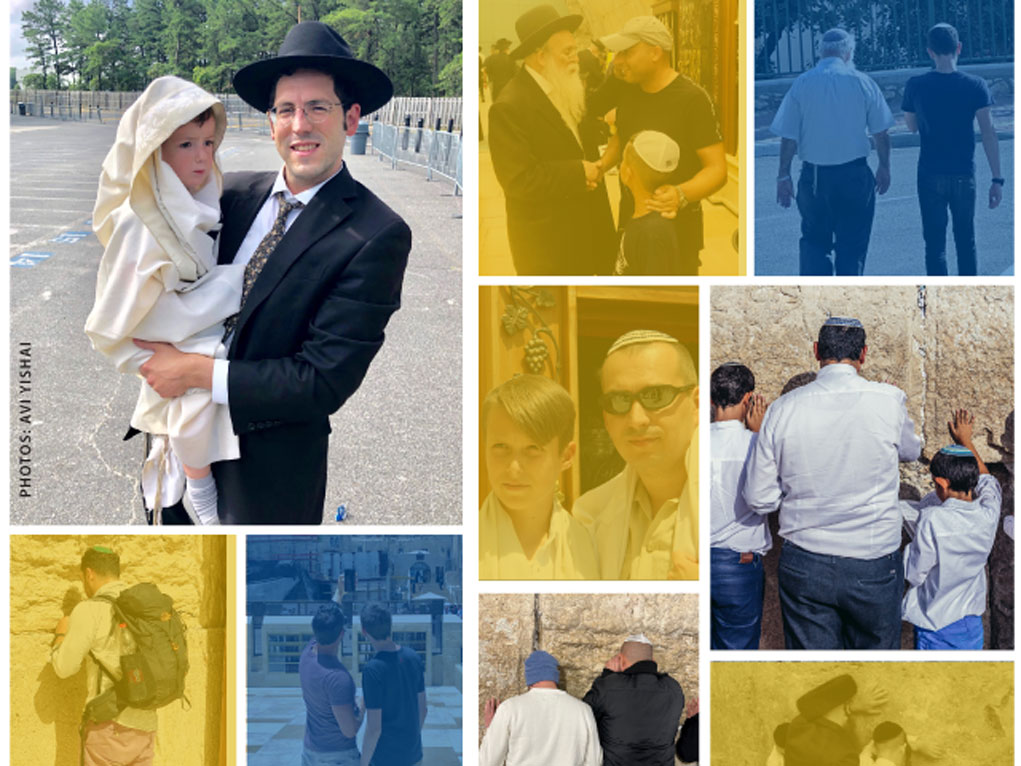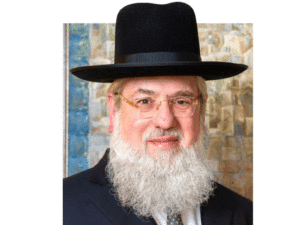Each of us seems to feel that he has a pretty solid grasp on the pulse of the frum community, be it in terms of levels of shemiras hamitzvos, attitudes, political outlook, and so forth. We typically feel this way about our own immediate community, and many of us feel this way about the broader Orthodox world as well – myself included.
I was thus a bit taken by surprise when reading the just-issued Nishma Research 2023 Profile of the U.S. Orthodox Jewish Community: Modern Orthodox, Chasidish & Yeshivish Sectors. This new study, spearheaded by Rabbi Mark (“Moish”) Trencher, a prominent business statistician and sociologist, and founder of Nishma Research, is a highly-expanded follow-up to 2017 and 2019 Nishma Research studies, which focused on the Modern Orthodox and baal teshuvah communities. As a member of the Study Advisory Group, who was privy to important discussions and analysis of this new study, I would like to present some of the highlights and insights that I feel are important and need serious follow-up.
The new Nishma Research study reflects the input of Jews, principally throughout the US, who self-identify as Orthodox. 32% of respondents identify as Modern Orthodox (split into 32% “Liberal MO,” 42% “Centrist MO,” and 26% “Stringent MO” categories); 26% of respondents identify as Yeshivish (16.4% “Traditional Yeshivish” and 9.6% “Modern Yeshivish”); 36% of respondents identify as Chasidish (23.6% “Traditional Non-Chabad Chasidish,” 5.2% as “Modern Non-Chabad Chasidish,” 5.3% as “Traditional Chabad/Lubavitch,” and 1.9% as “Modern Chabad/Lubavitch”). It is important to note that the survey was issued to targeted audiences via email; hence, those members of the Chareidi community who do not have email were not included in the study. 82% of survey respondents live in the United States, 23% of these US respondents reside in New York City (10% in Brooklyn, 7% in Manhattan and 4% in Queens), 16% reside in New Jersey, and the remainder reside elsewhere, mainly in sizeable Orthodox communities. (The remaining 18% of respondents reside primarily in Eretz Yisroel, Great Britain and Canada.)
The Liberal MO subgroup requires a bit of explanation, as it actually represents two somewhat different and smaller groups whose responses basically coalesce and thus can be categorized together. The Liberal MO subgroup accounts for those who would identify as “Open Orthodox” or something similar, meaning that they are religiously liberal. The Liberal MO subgroup also accounts for the “MO-Lite” community, whose views can be more religiously traditional but is overall quite lax in Yiddishkeit. Those who identify as Open Orthodox embrace very problematic innovations, such as the concept of female rabbis and various changes to halacha and minhag, but they tend to be more interested in Yahadus – according to their acute misunderstanding thereof. (The 2017 Nishma Research Profile of American Modern Orthodox Jews indicated that 49% of the children of Open Orthodox Jews are moving away from Yiddishkeit, and 38% of MO-Lite youth are likewise going in this direction.)
The Nishma Research 2023 Profile of the U.S. Orthodox Jewish Community addressed a broad array of issues, including halachic observance, emunah, changes in levels of shemiras hamitzvos, women’s religious roles, connections with one’s shul, primary issues of concern for Orthodoxy, attitudes on current events, and much more. Here is a breakdown of some of the most salient points:
Halachic Observance
Obviously, this category reflected high scores on the part of the Yeshivish and Chasidish communities, be it in the area of Shabbos, kashrus, reciting brachos, asking halachic shailos, etc. (There were a few surprising lapses here, though; more on this below.) The Modern Orthodox figures were quite different: 76% of Modern Orthodox men daven Shacharis each day, 78% lay tefillin daily, and 58% daven Mincha on weekdays. 67% of Modern Orthodox respondents recite brachos before eating, and 53% recite brachos acharonos. Shabbos and kashrus observance in the Modern Orthodox group were recorded in the mid-90% range.
Interestingly, as perhaps to be expected, when the various elements of the larger Modern Orthodox classification were broken down, the halachic observance level of the “Stringent MO” group was often the same as the Yeshivish and Chasidish groups (and in some cases surpassed them – please continue reading for an explanation of this below). This trend carried through the rest of the study as well, with Stringent MO beliefs and attitudes in all major areas equally strong as the Chareidi sector (and in certain instances even stronger). In contrast, the weak showing regarding halachic observance (and other areas) on the part of the general Modern Orthodox sector is due to the more liberal subcomponent’s responses, which lowered the overall Modern Orthodox numbers throughout. (For example, only 53% of Liberal MO males daven Shacharis daily, as do 73% of Centrist MO males. This impacted the overall MO numbers in this field.)
On a positive note, halachic observance across the Orthodox spectrum was deemed to have improved over the past decade, including a substantial uptick among the Modern Orthodox sector from 10 years prior.
Beliefs
Regarding acceptance of the Yud-Gimmel Ikkarei Ha-emunah, the Yeshivish and Chasidish sectors had a strong showing, but the Modern Orthodox sector was all over the place. An overall 52% of Modern Orthodox respondents fully believe in the authority of Torah Shebaal Peh (the Oral Torah), and 28% of Modern Orthodoxy respondents “tend to believe” in it. And in terms of Hashem being involved in daily life, 56% of Modern Orthodox respondents fully believe in it, and 24% of Modern Orthodoxy respondents “tend to believe” in it. Yet again, as revealed by the study’s detailed breakdown of Modern Orthodox subgroups, emunah on the part of the Stringent Modern Orthodox sector nears 100%, whereas the Liberal MO sector is considerably lower.
Communal Priorities
The Nishma Research 2023 Profile of the U.S. Orthodox Jewish Community asked respondents which communal issues need focus over the next decade in the order of priority. In the Yeshivish and Chasidish groups, the top priorities were dealing with those who commit abuse, the cost of Jewish education and the cost of maintaining an Orthodox home, people going off the derech, and shidduchim. In the general Modern Orthodox group, dealing with agunos and fighting anti-Semitism ranked respectively as priorities #3 and 5, while dealing with those who commit abuse, the cost of Jewish education and the cost of maintaining an Orthodox home were likewise top-priority. As elaborated upon by Rabbi Trencher in his post-study observations, dealing with people going off the derech came in as priority #12 among the general Modern Orthodox community, and perhaps shockingly, it came in as priority #17 among the Liberal MO subgroup, with “access to reliable news/information” and “climate/environment” coming in way ahead as priorities #12 and 13, and “approaches to Orthodox [to’eivah]” ranking as priority #4 among the Liberal MO category (!). The fact that this group, whose Torah observance is notably lower than the rest and whose youth are departing from Yiddishkeit in large numbers, gives such low priority to the OTD problem truly stands out and desperately calls for action.
The New Israeli Government
Interestingly, this latest Nishma Research study polled respondents on their attitudes toward the new Israeli government, which is of course comprised of a plurality of Orthodox Jews and is officially more right-wing than any previous Israeli government. Even if one doesn’t agree with certain aspects of this government (I myself am no fan of Itamar Ben-Gvir on various issues), it’s clear that the new Israeli government represents Orthodox interests and perspectives far more than its predecessors, and one would expect that anyone who refers to himself as Orthodox would welcome this. (The survey was issued to respondents shortly after the election, and the responses relate to the composition and attitudes of the new government rather than to its performance.)
Whatever one thinks of some aspects and personalities within the new Israeli government, which frum Jew in his right mind would instead prefer Lapid-Lieberman and the like?
Hold onto your seat, as within Modern Orthodoxy, the 2023 Nishma Research study revealed that 27% of the MO Centrist subgroup is pleased with the new Israeli government, versus 38% which is concerned about it, while in the Liberal MO subgroup, 11% is pleased with the new Israeli government and 67% is concerned (!). This is absolutely stunning. (Needless to say, in the Stringent MO subgroup, the vast majority is pleased with the new Israeli government, and the “pleased with the new Israeli government” numbers are remarkably even higher among the Yeshivish and Chasidish categories.)
Yeshivish and Chasidish Group Statistics
It must be noted that the new Nishma Research study reported that among the Chareidi sector, observance in certain areas of halacha is not close to 100%. For example, 90-91% of Chareidi men responded that they daven Shacharis daily; davening Mincha daily was only in the 82-89% range; etc. Informal discussion among the Study Advisory Group determined that this does not represent the Chareidi norm, and that these deficient numbers reflect the responses of people from without who are not fully committed to halachic observance but who refer to themselves are Yeshivish or Chasidish due to their comfort or affinity for these groups. This would also include those who grew up in Yeshivish and Chasidish communities but later moved away from full Torah observance, yet still self-identify with these communities on a social level and do not view themselves as part of the Modern Orthodox or non-Orthodox communities.
Some Takeaways for Us
Aside from this perhaps being interesting (and often tragic) material, what has it got to do with the Yated readership, which is seemingly not part of the problem? At face value, the Nishma Research 2023 Profile of the U.S. Orthodox Jewish Community is an alarm call for the “Non-Strident” segments of Modern Orthodoxy, as it exposes major lapses in observance and belief, and it bears witness to how far many in these groups have strayed from Yiddishkeit, despite self-identifying as Orthodox Jews. We dare not feel triumphal or be unperturbed that large numbers of our brethren, closer to our own camp, have veered away from Torah.
But let’s take a step back and think: How did many among the “Non-Strident” segments of Modern Orthodoxy descend to their current position? Were not the bulk of these people, or their parents or grandparents, originally from fully-Orthodox stock, totally shomrei Torah umitzvos? What happened?
Are not the same exact underlying forces that led large numbers of people in these Modern Orthodox subgroups away from Torah at play when it comes to our own communities? The robust pursuit of material wealth, immersion in the latest fashion and consumer trends, overexposure to secular media and placing oneself in sevivos that are less than conducive to avodas Hashem – do these not acutely threaten our communities as well? These are the forces that distance people from ruchniyus, without those affected usually realizing it until after the damage is done.
There are popular and glossy heimishe magazines whose content consists almost entirely of articles about money-making, politics, fashion and food. Are these the priorities with which we seek to identify? The mindset that results from this is one of gashmiyus and lack of focus on Hashem and Torah. And it has a profoundly negative impact.
As Torah Jews, we know that all that transpires in the world is due to the ratzon of Hashem, Hashgocha Protis. We do our hishtadlus and have bechirah, but Hashem runs the world, down to every atom, controlling global events and the decisions of leaders at the highest echelons. When we are overly immersed in politics – even if we support the right candidates and parties – through osmosis do we begin to believe that everything depends on human beings and the strategies and political posturing of presidents, cabinet members and legislators. We take Hashem out of the picture.
The more we become submerged in materialism, be it in the form of excessively exotic vacationing, the latest (and often problematic) fashion crazes, extravagant and over-the-top gastronomic delicacies, being fixated on wealth and enamored with business superstars, or the building of quasi-mansions with all the extras in neighborhoods that are not exactly mekomos Torah, we distance ourselves from Hashem, and our priorities become those of the secular street. We drift away without even realizing it, embracing inane fads and all that which is non-Jewish, while going through the motions of being frum Yidden, yet not realizing that a subterranean metamorphosis is occurring in our attitudes, priorities and mentality. The opulence and indulgence of a contemporary seudas Achashveirosh lifestyle transform our minds, hearts and souls to something we would never have imagined. And the same is true when we over-saturate our heads, ears and eyes with media and politics. It is frightening. Are we perhaps not on the direct path toward “Non-Strident” Yiddishkeit? We might bear a Chareidi shell, but the inner substance becomes emptied and replaced with foreign material.
It is no secret that in the world of education, the primary problem facing today’s students is lack of ability to focus for more than a moment. There is no sense of patience, and attention spans are close to zero, for students are accustomed to instant gratification as they spend every free moment and more rapidly clicking and scrolling through screens of social media Tweets and videos, with no focus or thought as they crave immediate, mindless “fun.” If an app takes more than a second to load, forget about it – no time for waiting. The more a ben Yisroel adopts and integrates this vacuous culture into his life, the more his Torah learning suffers. Real, serious limud haTorah requires patience, deliberation, and lots of time to grind through difficult material and try to analyze and digest it. It is the antithesis of contemporary social media norms. As much as we are concerned about online shmutz, let us be equally concerned about how electronic media infatuation and addiction destroy one’s ability to properly learn, appreciate and internalize Torah.
How does this pertain to the issue at hand? If one cannot become immersed in Torah, and, on the contrary, he is somewhat estranged from Torah learning, his Yiddishkeit is acutely affected. Rather than harbor a love for Torah and be enchanted by its profundity and awed by its sanctity, limud haTorah is something that is a bit alien and perhaps even uncomfortable to such an individual. This lamentably rings true when contrasting Liberal MO boys’ chinuch with that of the Chareidi community. Even in Modern Yeshivish schools, boys start learning Gemara in 5th grade, quickly gaining proficiency in reading and understanding the basics, mastering the simple meaning of a few sugyos in Shas, along with some Rashi and a bit of Tosafos, and subsequently climbing to new heights of Torah accomplishment in each successive grade. Sadly, in Liberal MO high schools, it is not uncommon for boys in 12th grade to have trouble even pronouncing a few words of Gemara. The contrast is striking and tragic. This is one reason that so many Liberal MO youth depart from Orthodoxy, as they feel no connection to Torah. This same lack of proper chinuch was faced by countless formerly-frum Jews who immigrated to the US a century ago, as they attended public school during the day and were enrolled in local Talmud Torahs after school, where there was not ample time to provide immersion in limud haTorah or mastery of any serious learning. The result of this, along with incessant inundation by secular American culture and these immigrants’ embrace thereof, was the churban of mass departure from Yiddishkeit.
The Nishma Research 2023 Profile of the U.S. Orthodox Jewish Community very much speaks to us. Every generation has its own unique nisyonos, often not faced by previous generations, although below the surface, the nisyonos are from the same root. Let us look to the underlying factors that enabled so many of our brethren to swerve off course and thereby be warned and resolve to be mechazeik our own trajectory in Torah umitzvos. Hashem ya’azor.








